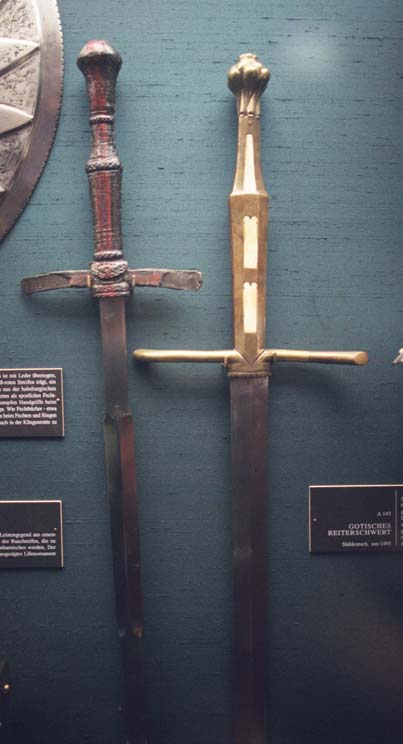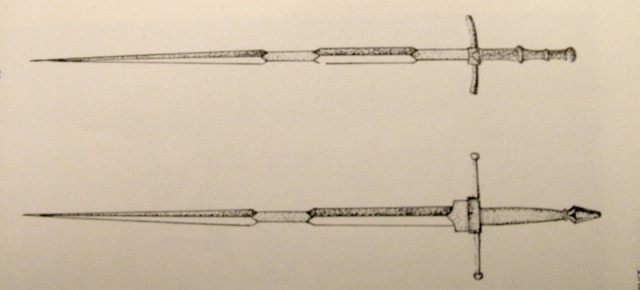The problem is that I had to try and reproduce a type of sword without any hard data at all, not even any lengths, weight or widths. This means that even though the last guinea pig handled ok, I probably missed the mark by miles. Example: The original might be a 180cm twohander while prototype is a small hand and a half sword of total 125cm.
Has anyone by any remote chance actually seen anything like this sword? Any information would be much appreciated. The book from which I copied this picture mentions nothing at all about this sword. The picture was taken from "Cut and thrust weapons" by Eduard Wagner, published by Spring Books in 1967, on page 163, plate 26.
Nostro





